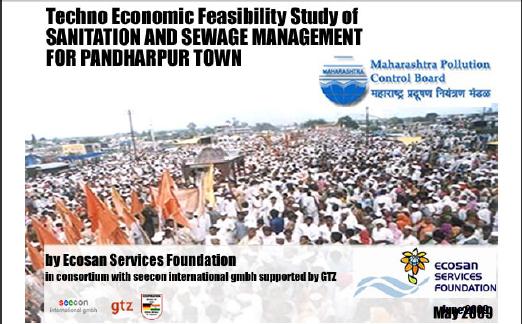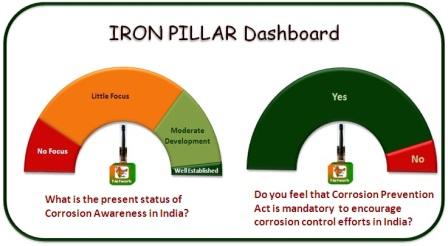/topics/plumbing
Plumbing
Rainwater harvesting in Bangalore: Who are the real beneficiaries?
Posted on 13 May, 2012 02:21 PMA) Will the ground water really be recharged? There are about 100 houses in the area and most have rain water harvesting (RWH). My fear is that the well will overflow and water again goes to the storm drains
B) Will the ground water in aquifers get infected? Then why are we doing this RWH (Lot of money, I have also spent like others).
SWSM invites applications for Assistant State Co-ordinator (IEC), Jharkhand – Apply by January 5, 2012
Posted on 05 Jan, 2012 08:39 AMContent courtesy: DevNetJobsIndia


Description:
The flagship programmes of Government of India, Total Sanitation Campaign (TSC) and National Rural Drinking Water Programme (NRDWP) are being implemented by the State Water and Sanitation Mission (SWSM) Jharkhand, Government of Jharkhand. The NRDWP guideline makes provision for a state level Water and Sanitation Support Organisation for taking up various support activities under the drinking water and sanitation sector. In Jharkhand the state level Programme Management Unit, which is registered as a society has been working on planning, monitoring and support in programme implementation. The State Water and Sanitation Mission, Jharkhand wishes to recruit an Assistant State Co-ordinator (IEC).
Integrated Low Cost Sanitation Scheme - Revised guidelines by the Ministry of Housing and Urban Poverty Alleviation (2008)
Posted on 12 Aug, 2011 04:29 PMThe objective of the scheme is to convert or construct low cost sanitation units through sanitary two pit pour flush latrines with superstructures and appropriate variations to suit local conditions (area specific latrines) and construct new latrines where economically weaker sections household have no latrines and follow the in-human practice of defecating in the open in urban areas. This would improve overall sanitation in the towns.
Guidelines for water safety plans for rural water supply systems - A document by SIAES and WHO India (2009)
Posted on 20 Apr, 2011 01:10 AM Delivery of safe drinking water is vital for protecting public health and of promoting more secure livelihoods.
Delivery of safe drinking water is vital for protecting public health and of promoting more secure livelihoods.
The traditional approach to water quality and safety management has relied on the testing of drinking water, as it leaves the treatment works or at selected points, either within the distribution system or at consumer taps. It is referred to as ‘end‐product testing’.
Application of Composite Correction Program for improvement in efficiency of water treatment plants - A WHO paper
Posted on 20 Apr, 2011 12:41 AMThe goal of safe and affordable drinking water and sanitation has not yet been achieved. The current practices of water purification are inadequate to produce secured water supply. Maintaining health protection at water supply systems has become more challenging with resistance of some pathogens to disinfection using chlorination and an increase in the immuno-compromised population (e.g., people with HIV, organ transplant patients, the elderly).
In this context, it has become essential to develop various tools such as Composite Correction Programme (CCP) and Water Safety Plans (WSP) to improve water purification and distribution systems, to achieve the goal of providing safe drinking water.
Presentations from the Water India conference organised by Confederation of Indian Industry (2011)
Posted on 12 Apr, 2011 11:56 PMThe Confederation of Indian Industry (CII)organised the Water India conference, around the theme “Transforming the municipal and industrial water landscape - Issues, challenges and opportunities".
Indian standard code of practice for installation of septic tanks (IS: 2470) - Bureau of Indian Standards (1986)
Posted on 11 Apr, 2011 03:46 AMThis IS Code provides various requirements that have to be met while constructing a septic tank, so that it meets minimum standards. This Code is dictated by the Bureau of Indian Standards, and ensures that the sewage is treated in a way that maintains health and hygiene of the community.
While the first standard for small septic tanks was first printed in 1963 and then revised in 1968, the standard for disposal of effluent from septic tanks was published later in 1964 and revised in 1971.
This code has been sourced through City Managers' Association Karnataka (CMAK), a non profit that provides technical expertise to urban local bodies.
Techno-economic feasibility study of sanitation and sewage management for Pandharpur town, Maharashtra - Ecosan Services Foundation (2009)
Posted on 10 Apr, 2011 02:15 AM This study provides interventions to solving the sanitation crisis in the holy town of Pandharpur, situated on the banks of the Chandrabagha/Bhima river, in the state of Maharashtra, which receives more than 1.5 crore devotees annually. On any given day there are approximately 20,000 pilgrims in this Class B town. This vast floating population creates massive sanitation problems leading to environmental and hygiene issues. The study forms part of the Maharashtra State Pollution Control Board's 'Environmental Improvement Programme at Religious Places in Maharashtra' project.
This study provides interventions to solving the sanitation crisis in the holy town of Pandharpur, situated on the banks of the Chandrabagha/Bhima river, in the state of Maharashtra, which receives more than 1.5 crore devotees annually. On any given day there are approximately 20,000 pilgrims in this Class B town. This vast floating population creates massive sanitation problems leading to environmental and hygiene issues. The study forms part of the Maharashtra State Pollution Control Board's 'Environmental Improvement Programme at Religious Places in Maharashtra' project.
Nearly half of respondents for online corrosion management survey say little focus for corrosion awareness in India
Posted on 18 Jan, 2011 11:34 PMContant and Image Courtesy: Corrosion Management Survey in India
 We CAN Control Corrosion in India, an Open Source Knowledge Management group has launched an online survey for Corrosion Management in India on 15 August 2010. Survey response for the period August-December 2010 reveals the importance of creating awareness for corrosion in India. Nearly half of the survey respondents say Little Focus is there for corrosion awareness in India.
We CAN Control Corrosion in India, an Open Source Knowledge Management group has launched an online survey for Corrosion Management in India on 15 August 2010. Survey response for the period August-December 2010 reveals the importance of creating awareness for corrosion in India. Nearly half of the survey respondents say Little Focus is there for corrosion awareness in India.
Civil society consultations for the 12th Five Year Plan Approach Paper: Urban & Rural WATSAN sector
Posted on 30 Dec, 2010 11:20 AMAt the request of the Planning Commission, Arghyam and WaterAid agreed to co-ordinate and support a process of civil society consultation for inputs on rural and urban domestic water and sanitation for generating recommendations for the Approach Paper to the 12th Five Year Plan of the Government of India.
A glimpse of the audience





